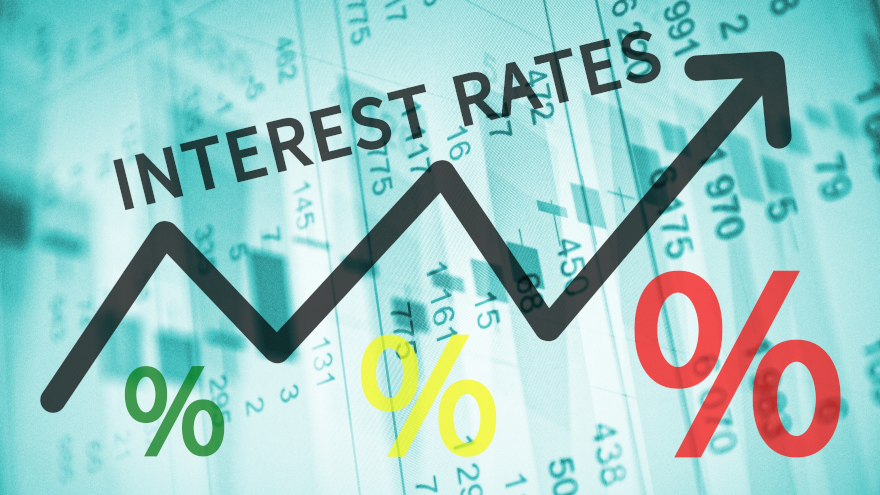Interest-rate cut may finally be on horizon

The Federal Reserve’s next opportunity to modify interest rates arrives next Wednesday.
Experts see the job market as a primary reason why policymakers might be making their first modification in more than a year.
And perhaps at least one member of the Federal Open Market Committee (FOMC) does, too.
Comerica Bank chief economist Bill Adams and senior economist Waran Bhahirethan recapped the latest job report from the Bureau of Labor Statistics released on Friday.
“Payrolls registered a decent monthly increase in August, but downward revisions make the trend of job growth look considerably weaker than when July’s jobs report was released. Employers added a net 142,000 nonfarm payroll jobs in August, below the 165,000 consensus forecast. August was better than the 114,000 monthly increase in last month’s report, but that increase was revised down to 89,000 in the latest data, and June was revised down, too, to 118,000 from 179,000,” Adams and Bhahirethan wrote in their analysis.
“Factoring in those revisions, payroll growth averaged a modest 116,000 in the three months through August, down from a 170,000 three-month average in last month’s report. And over the last 12 months, payrolls averaged a 157,000 monthly increase after accounting for the 818,000 downward revision to employment in March 2024 which was announced in mid-August (The annual preliminary benchmark revision). The conventional wisdom is that one bad report doesn’t change the trend. But in this case, the trend is clearly weaker than in the prior report,” they continued.
In another view of the job market, private sector employment increased by 99,000 jobs in August and annual pay was up 4.8 percent year-over-year, according to the August ADP National Employment Report, produced by ADP Research in collaboration with the Stanford Digital Economy Lab and distributed last week.
The ADP National Employment Report is an independent measure and high-frequency view of the private-sector labor market based on actual, anonymized payroll data of more than 25 million U.S. employees.
“The job market’s downward drift brought us to slower-than-normal hiring after two years of outsized growth,” ADP chief economist Nela Richardson said in a news release. “The next indicator to watch is wage growth, which is stabilizing after a dramatic post-pandemic slowdown.”
After looking at that data, Fed governor Christopher Waller made public remarks at the University of Notre Dame.
“While the labor market has clearly cooled, based on the evidence I see, I do not believe the economy is in a recession or necessarily headed for one soon,” Waller said on Thursday at an event hosted by the university. “The collective set of economic data indicates to me that the labor market and the economy are performing in a solid manner and the prospects for continued growth and job creation are good, with inflation near 2%. I continue to believe that this can occur without substantial harm to the labor market. But I also believe that maintaining the economy’s forward momentum means that, as chair (Jerome) Powell said recently, the time has come to begin reducing the target range for the federal funds rate.
“Furthermore, I do not expect this first cut to be the last,” Waller added later in his prepared remarks. “With inflation and employment near our longer-run goals and the labor market moderating, it is likely that a series of reductions will be appropriate. I believe there is sufficient room to cut the policy rate and still remain somewhat restrictive to ensure inflation continues on the path to our 2% target.
So, if that interest-rate cut is finally coming next week, how much will it be? Adams and Bhahirethan offered their prediction.
“In sum, the job market is in decent shape but moving in the wrong direction. Job growth is lagging behind growth of the labor force, fueling an increase in unemployment,” they said.
“The Fed will see the August jobs report as strengthening the case for less restrictive monetary policy. The Fed’s June dot plot showed most Fed policymakers thought it likely would be appropriate to cut rates by one quarter to one half a percentage point by year-end, but that projection is badly out of date now,” they continued. “At the next policy decision on Sept. 18, the Fed looks slightly more likely to cut interest rates by a quarter percent than by a half percent, but it will be a close call.
“Comerica forecasts for the Fed to cut short-term interest rates a full percentage point between now and the end of January. That should boost credit-intensive parts of the economy like housing, manufacturing, and business investment, stabilize job growth, and prevent the current slowdown from deepening,” Adams and Bhahirethan went on to say.


